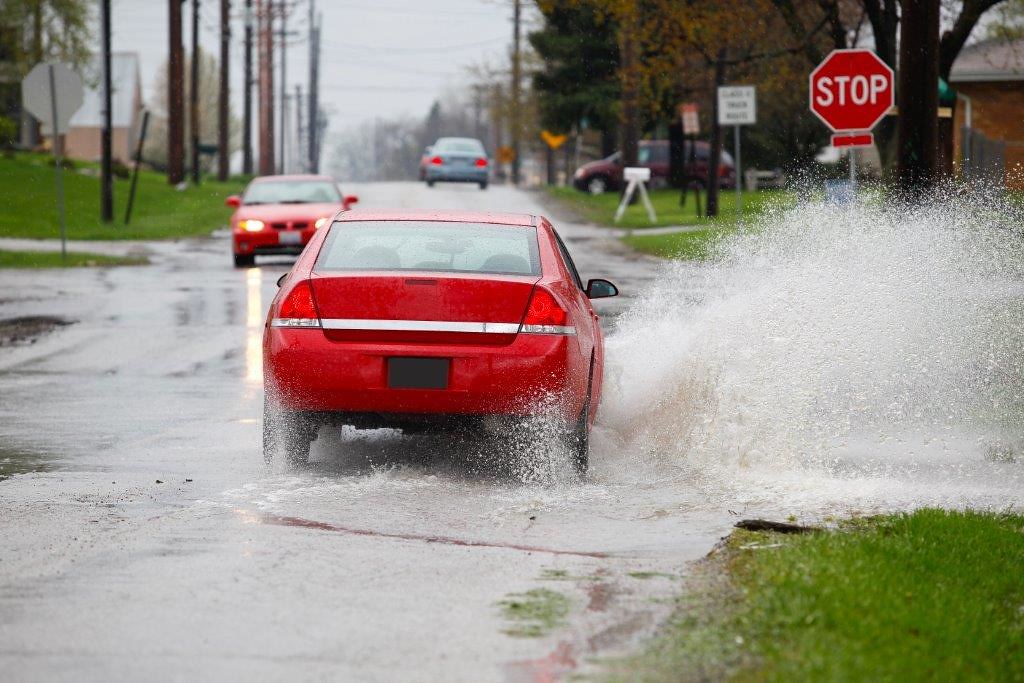The grinding of gears and the harshness of shifting can spell disaster for your costly automatic transmission, a marvel of engineering that needs quality fluid and precision to run smoothly for hundreds of thousands of miles. To keep your automatic transmission humming along happily for years to come, delve into these 15 critical mistakes to avoid at all costs.

1. **Don’t Drive Through Deep Water**: Automatic transmissions have a vent located on the exterior housing. This vent serves an important purpose – it allows pressurized transmission fluid to escape and relieve pressure as the fluid expands from heat during normal operation. Driving through deep water, however, can be catastrophic for this vent. As the vehicle moves through standing water, the water can rush into the open vent and contaminate the transmission fluid inside.

2. **Avoid Shifting from Drive to Reverse While Moving**: It’s all too easy to accidentally shift from Drive to Reverse, especially with column shifters positioned on the steering column or console. Just a slight nudge from your elbow or knee can cause the shifter to slip into Reverse while you’re still moving forward, creating immense stress on internal components that aren’t designed to endure such a jolt.

3. **Don’t Allow Extended Idling in Drive**: While it’s common to leave your car idling when stopped briefly, prolonged idling in Drive can lead to excessive heat buildup in the transmission. Even when stationary, the pump circulates fluid, and the torque converter stays engaged, causing the transmission parts to continue rotating without any movement, which generates unwanted internal heat from constant friction.

4. **Don’t Do Burnouts**: Burnouts may place a lot of strain on drivetrain components. When doing a burnout, the tires break traction with the pavement and spin freely while the output shaft continues applying torque. This puts severe stress on the gears and shafts not designed to operate at such extreme opposing forces. Automatic transmissions in particular suffer greatly during burnouts. The abrupt changes in torque and wheel speeds generate tremendous heat and vibration within the transmission.

4. **Beware of Neglecting Transmission Fluid Changes**: Many modern vehicles claim to have ‘lifetime fluid’ that never requires changing, but this can lead to premature transmission failure as older fluid degrades. Automatic transmission fluid is a carefully formulated concoction designed for specific friction coefficients, thermal capacity, and viscosity, but over time, it breaks down, losing its protective attributes and putting your transmission at risk.

6. **Stay Away from Slipping Gears**: One of the most frustrating experiences for any driver is when their vehicle unexpectedly slips out of gear. This problem often indicates that the transmission is struggling to maintain a connection between the engine and the wheels. Slipping can be caused by low fluid levels, worn clutches, or faulty sensors. The transmission can overheat and suffer from significant wear, leading to costly repairs. Therefore, please regularly check fluid levels and ensure that maintenance is performed.

5. **Keep an Eye on Transmission Temperature**: Like any finely-tuned machine, your automatic transmission operates best within a specific temperature range. If this range is exceeded, it can lead to significant damage, such as burnt fluid and slipping gears. Many vehicles come equipped with a transmission temperature gauge, so if yours does, it’s vital to keep an eye on it; if the temperature rises too high, pull over and let it cool before resuming your journey.

8. **Watch for Unusual Noises**: If your transmission is making strange sounds, it’s a red flag that something is amiss. Whining, clunking, or grinding noises can indicate internal damage or low fluid levels. Ignoring these sounds can lead to a complete transmission failure, resulting in expensive repairs. If you notice any unusual noises, it’s best to have your vehicle inspected by a professional as soon as possible. Early detection can often prevent a minor issue from escalating into a costly repair.

9. **Use the Right Driving Techniques**: Driving style can seriously affect the life of the transmission. As an example, rapid acceleration or hard braking puts unnecessary stress on transmission components. The alternative is smooth acceleration and gradual deceleration. When towing, make sure your vehicle is within towing capacity to avoid overloading the transmission. Practising good driving habits will not only improve your vehicle’s performance, but also extend the life of your transmission.

10. **Know Your Towing Capacity**: Overloading your vehicle can be detrimental to your transmission’s health. Every vehicle has a specified towing capacity, and exceeding this limit puts tremendous strain on the transmission. This can result in overheating, slipping, and ultimately, transmission failure. It is essential to refer to the vehicle’s owner’s manual for vehicle limitations. Ensuring that you drive within the recommended limitations will help maintain the integrity of your transmission over time.

11. **Avoid Quick Shifts After Cold Starts**: When starting your vehicle on a cold morning, it’s important to allow the transmission to warm up before driving aggressively. Cold transmission fluid is thicker and doesn’t flow as smoothly, leading to potential damage if subjected to high-stress conditions. Allow your vehicle to idle for a minute or two, giving the transmission time to circulate the fluid properly. This simple step can significantly reduce wear and prolong the life of your transmission.

12. **Regularly Inspect and Replace Filters**: Just like engine oil, transmission fluid can contain contaminants that affect its performance. A clogged transmission filter can restrict fluid flow, leading to overheating and eventual failure. Regular inspections and timely replacements of the transmission filter are crucial. Depending on your vehicle and usage, consider changing the filter every 30,000 to 50,000 miles. Keeping your transmission fluid clean ensures optimal performance and longevity.

13. **Pay Attention to Warning Lights**: Modern vehicles are equipped with various sensors that alert drivers to potential issues, including problems with the transmission. If your dashboard shows a transmission warning light, don’t ignore it. Prompt attention to these alerts can save you from extensive damage down the line. Always consult with a qualified technician to diagnose and address any warning lights promptly.

14. **Educate Yourself on Transmission Types**: Understanding the differences between your vehicle’s transmission type can help you make informed decisions regarding maintenance and driving techniques. Automatic transmissions operate differently than manual ones, and each requires distinct care. Familiarize yourself with the characteristics of your transmission type to better appreciate its needs and potential pitfalls. Knowledge is power, and being proactive can keep your transmission running smoothly.

6. **Invest in Professional Maintenance Services**: To maintain the health of your transmission, consider seeking out professional maintenance services. A skilled mechanic can perform thorough inspections and maintenance tasks that a typical car owner may overlook. From fluid changes to advanced diagnostics, professional services can spot potential issues before they escalate into major problems, and investing in regular maintenance can significantly reduce repair costs over the life of your vehicle.

With these valuable tips in hand, you can help ensure that your automatic transmission stays strong and dependable for many years. A little proactive maintenance and care can go a long way in preventing costly repairs, allowing you to hit the open road with peace of mind, knowing your transmission is in excellent shape!
Related posts:
Top 5 Automatic Transmission Blunders That Could Cost You: If You Want It to Last
Top 5 Most Expensive Truck Transmission Repair Mistakes: How To Avoid Them?
The Top 4 Reasons for Transmission Failure





